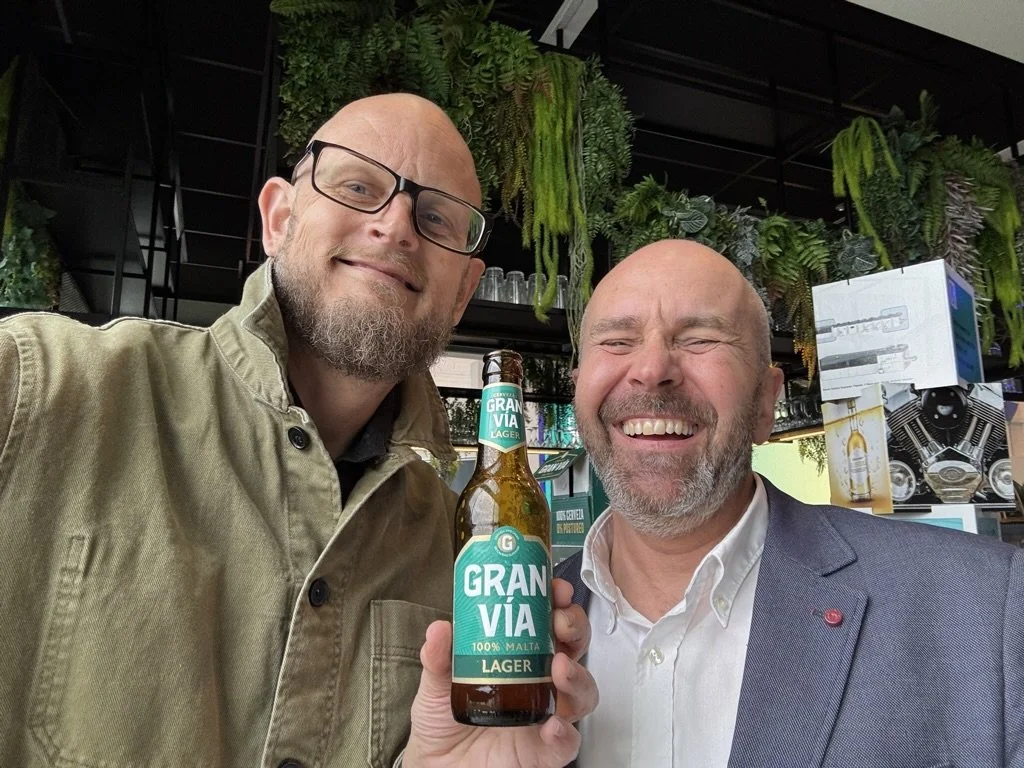Boxes, Beers, and Breakthroughs: How Kento Is Leading Hybrid Digital Print for Corrugated Packaging
By FuturePrint Editorial Team
Javier Quesada, founder and CEO of Kento Digital Printing, delivered a lively and insightful presentation at the recent FuturePrint TECH Packaging and Labels conference in Valencia, offering a rare and practical look into how digital transformation is unfolding in the corrugated packaging sector—one box at a time.
Known for specialising exclusively in hybrid digital printers for corrugated, Kento has installations across Europe, America, and Africa. Quesada’s presentation focused on a real-world case study with Cervezas Gran Via, a mid-sized brewery in Seville, Spain, as it shifted from basic shipping containers to high-quality, point-of-sale packaging for retail.
From Boring Brown to Branded Impact
Cervezas Gran Via, which brews 3 million litres of beer annually, is expanding beyond the hospitality channel into retail. To make that leap, it needed to replace plain corrugated boxes with eye-catching packaging that would stand out on supermarket shelves. The challenge? Finding the most cost-effective and visually striking print method for small to mid-sized production volumes.
The Print Technology Matrix
Quesada guided the audience through the brewery’s decision-making process, comparing the costs and benefits of various printing technologies across both preprint and post-print workflows. He examined offset, flexo, digital, and hybrid configurations, with a focus on fixed costs (such as plates), variable costs (especially ink), and overall production efficiency.
Offset offered top-tier print quality but involved high costs and multiple production steps—making it inefficient for smaller volumes. Preprint flexo was better, but plate costs were a major barrier. Digital preprint removed the need for plates but came with expensive inks, especially on full-coverage boxes like Cervezas Gran Via’s.
Post-print digital provided quality but still suffered from high ink costs, and couldn’t match the inline efficiency of traditional flexo setups. Hybrid post-print—Kento’s speciality—emerged as the sweet spot: flexo used for solid backgrounds, digital for high-impact graphics. This reduced ink consumption and plate costs, while delivering standout print quality.
The Numbers Don’t Lie
Quesada shared actual cost comparisons from different print suppliers. For Cervezas Gran Via’s needs—short runs of 2,000 to 60,000 boxes—Kento’s hybrid approach delivered the best cost-performance ratio. Fixed costs were kept low, and ink use was optimised. While full digital print remained expensive at smaller volumes, flexo began to close the cost gap once volumes approached 50,000 units.
Strategic Choice, Brand Impact
With packaging representing up to 6% of the total cost of materials for the brewery, this wasn’t just a design decision—it was a strategic business move. By choosing hybrid post-print, Cervezas Gran Via improved shelf presence, retained cost control, and embraced a scalable, sustainable packaging solution.
Quesada closed by inviting attendees to enjoy a Cervezas Gran Via beer—printed, of course, using a Kento hybrid press. It was a fitting end to a compelling session that showcased how specialist innovation, real-world application, and practical thinking can drive digital adoption in even the most traditional corners of packaging.
An innovative talk and use of Kento Hybrid Printing Technology by Cerveza Gran Via, and a lager too! Check out the talk below!

